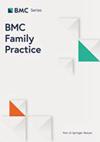患者对心血管疾病风险交流工具的实用性和效果的看法:定性分析
IF 3.2
3区 医学
Q1 MEDICINE, GENERAL & INTERNAL
引用次数: 0
摘要
不理解风险交流可能会导致治疗依从性差。我们以高血压为例,调查了心血管疾病高危患者对风险交流工具的看法。作为丹麦南部地区全科医生随机对照试验大型项目的一部分,我们进行了一项半结构化个人访谈研究。研究对象包括高血压患者,他们使用了一种由可视化动态心血管风险交流工具组成的干预措施,并定期接收电子邮件,提供健康生活方式建议。分析是基于马尔特鲁德系统文本浓缩法(Malterud's Systematic Text Condensation)进行的。本文只关注访谈研究的结果,共进行了 9 次访谈,并对访谈结果进行了分析。信息技术的设置对坚持干预有重大影响。如果认为信息技术设置易于使用和访问,则会产生积极影响;如果认为信息技术设置出现故障,则会产生消极影响。干预提高了患者对心血管疾病风险的自我洞察力。患者表示,当他们患有更严重的并发症时,干预措施和心血管疾病风险对他们来说就不那么重要了。在进行风险直观交流时,参与的医疗专业人员对于坚持治疗非常重要。患者对他们的全科医生表示信任,而全科医生对干预措施的态度影响了患者对其有用性的看法。虽然受访者表示对自己罹患心血管疾病风险的认识有所提高,但他们都没有感到更加担忧。患者报告说,他们对心血管疾病风险的认识有所提高,但并没有增加担忧。我们的研究结果与之前的研究结果一致,都强调了患者的动机和风险意识对坚持治疗的重要性。全科医生在为患者实施新工具时可发挥重要作用。本文章由计算机程序翻译,如有差异,请以英文原文为准。
Patients’ views on usefulness and effects of a risk communication tool for cardiovascular disease: a qualitative analysis
Failing to comprehend risk communication might contribute to poor treatment adherence. Using hypertension as a case, we investigated how a risk communication tool for patients with an elevated risk of cardiovascular disease was perceived. As part of a large project featuring a randomised controlled trial in a general practice setting in the Region of Southern Denmark, we conducted a semi-structured individual interview study. The study included patients with hypertension who had used an intervention comprising a visual and dynamic cardiovascular risk communication tool, along with receiving recurring emails providing advice on a healthy lifestyle. The analyses were based on Malterud’s Systematic Text Condensation. This article focuses solely on the results of the interview study, which comprised a total of 9 conducted and analysed interviews. The IT setup had a major impact on adherence to the intervention. A positive impact was found when the IT setup was perceived as easy to use and accessible, while a negative impact was noted when it malfunctioned. The intervention increased patients’ self-reported insight into risk of cardiovascular disease. Patients reported the intervention and their risk of cardiovascular disease to become less important to them when they had more severe comorbidities. The involved health professional was very important for treatment adherence when communicating risk visually. Patients expressed trust in their general practitioners, and the general practitioners’ attitudes toward the intervention affected patients’ perceptions of its usefulness. While the informants reported an increased awareness of their risk of cardiovascular disease, none of them felt more concerned. Patients reported an increase in their perceived insight into the risk of cardiovascular disease but not an increased concern. Our findings align with previous studies emphasizing the importance of patients’ motivation as well as risk perception for adherence. General practitioners have an important role when implementing new tools for patients.
求助全文
通过发布文献求助,成功后即可免费获取论文全文。
去求助
来源期刊

BMC Family Practice
医学-医学:内科
CiteScore
3.20
自引率
0.00%
发文量
0
审稿时长
4-8 weeks
期刊介绍:
BMC Family Practice is an open access, peer-reviewed journal that considers articles on all aspects of primary health care research. The journal has a special focus on clinical decision making and management, continuing professional education, service utilization, needs and demand, and the organization and delivery of primary care and care in the community.
 求助内容:
求助内容: 应助结果提醒方式:
应助结果提醒方式:


